Are you looking for unique types of spider plants? One of the most popular indoor plants, the spider plant also boasts a wide variety of uncommon variants. This plant is often referred to as spider ivy or the ribbon plant. Garden enthusiasts adore keeping them indoors since they are so simple to grow and quite adaptable, in addition to being visually stunning.
However, rare varieties are (obviously) tough to find. In this guide, we’ll explore a few rare varieties and their attributes, so you can decide more on the spider plant you want before you begin hunting for your rare breed of choice.

What are Spider Plants?
Have you ever wondered why these plants are called spider plants? The term “spider plants” comes from the fact that its plantlets, also known as spiderettes, resemble a spider’s body dangling off of a web.
Off the stems of these plants grow white blooms, and the most distinctive characteristic of these extraordinary plants is that their blossoms only bloom in the summer. The spider plants occupy space and keep your home’s interior green when other plants are losing their leaves and flowers.
Spider plants, which are most famous for their beautiful leaves, help to enhance indoor air quality while adding a touch of greenery to the interiors of your home. They may have a spooky name, but these plants are remarkably stress-free. The majority of spider plants can adapt to any environment, provided your home has the right temperature and humidity levels. If you enjoy indoor or window plants, you might want to try your hand at growing spider plants.
These unique plants grew as ground coverings in the tropical rainforest of Africa before they made their way into homes in the 19th century. They originated in South Africa before becoming widespread around the world. Since they are so simple to grow, spider plants have endured the test of time.
These plants can be fairly picky about their soil and water needs, but they don’t require much of your attention. They can endure both bright and low-light conditions. In general, hanging baskets are the best place to cultivate spider plants because of their long leaves’ propensity to arch over the edge and carry tiny plantlets with them.
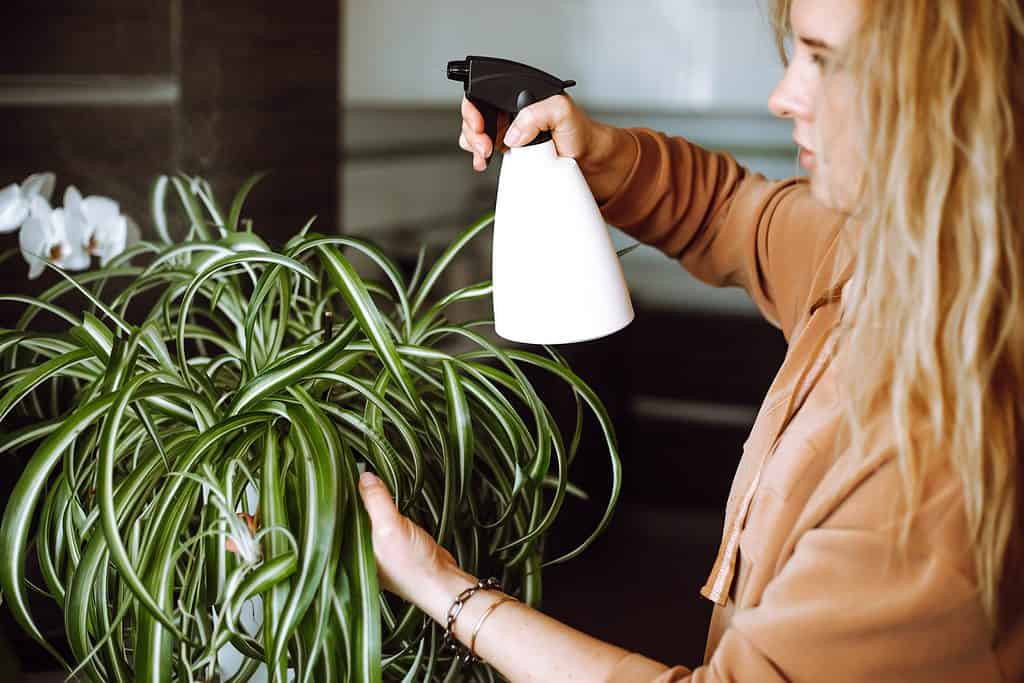
Spider plants (pictured) are quite easy to maintain with a little bit of attention and time.
©tativophotos/Shutterstock.com
How to Grow Spider Plants
Spider plants can be kept almost anywhere indoors. This houseplant is an excellent option for bedrooms and workplaces since it is surprisingly effective at removing indoor air pollutants. Watering the spider plant once a week or more often encourages faster growth. Sometimes the ends of this plant’s leaves get brown and crispy; if this occurs, consider raising the humidity level in the area by misting it with a spray bottle. In general, spider plants need well-draining soil, medium to bright indirect sunshine, and a little amount of shade.
Types of Spider Plants
Although they all go by the label of spider plants, not all spider plants are the same. Several whole species of spider plants are out there under the genus Chlorophytum. The only thing these plants have in common is that their plantlets have a form that resembles a spider, hence their common name.
There are several spider plant species in South African forests. Every variety has a distinctive quality that sets it apart from similar varieties. They all produce spider plant offspring and demand the same level of plant care. Their outward appearance serves as their main point of distinguishing them from one another. As a result, three different categories may be used to classify rare spider plants.
Variegated Spider Plants
The spider plant’s variegated varieties are by far the most preferred by fans of indoor plants, and there are many different types of variegated spider plants out there. Variegated spider plants are rather attractive even if they are the least rare of the three.
Non-Variegated Spider Plants
The leaves of non-variegated spider plants often have a uniform shade of green with no patterning. An unusual variant that is difficult to obtain in many nurseries is the solid green spider plant form. You might need to get it from a website that sells spider plants and other specialty plants.
Curly Spider Plants
Curly spider plants have a distinct curl to their leaves, rather than the straight-sloping appearance of the typical spider plant. Except for its curled shape, the leaves are identical to those of any variegated spider plant. It also produces curled offspring, adding to its unique features. These particular spider plants are uncommon and hence difficult to find. It’s not the type of spider plant you can readily get at the nearby nurseries, so try searching for them online instead.
7 Rare Varieties of Spider Plants
The tropical forests of South Africa and other parts of the world are home to over 200 distinct kinds of spider plants. However, plant enthusiasts have introduced just a few of these into homes. The following are some rare varieties that could make an excellent addition to your indoor collection.
1. Ocean Spider Plant
Chlorophytum comosum ‘Ocean’
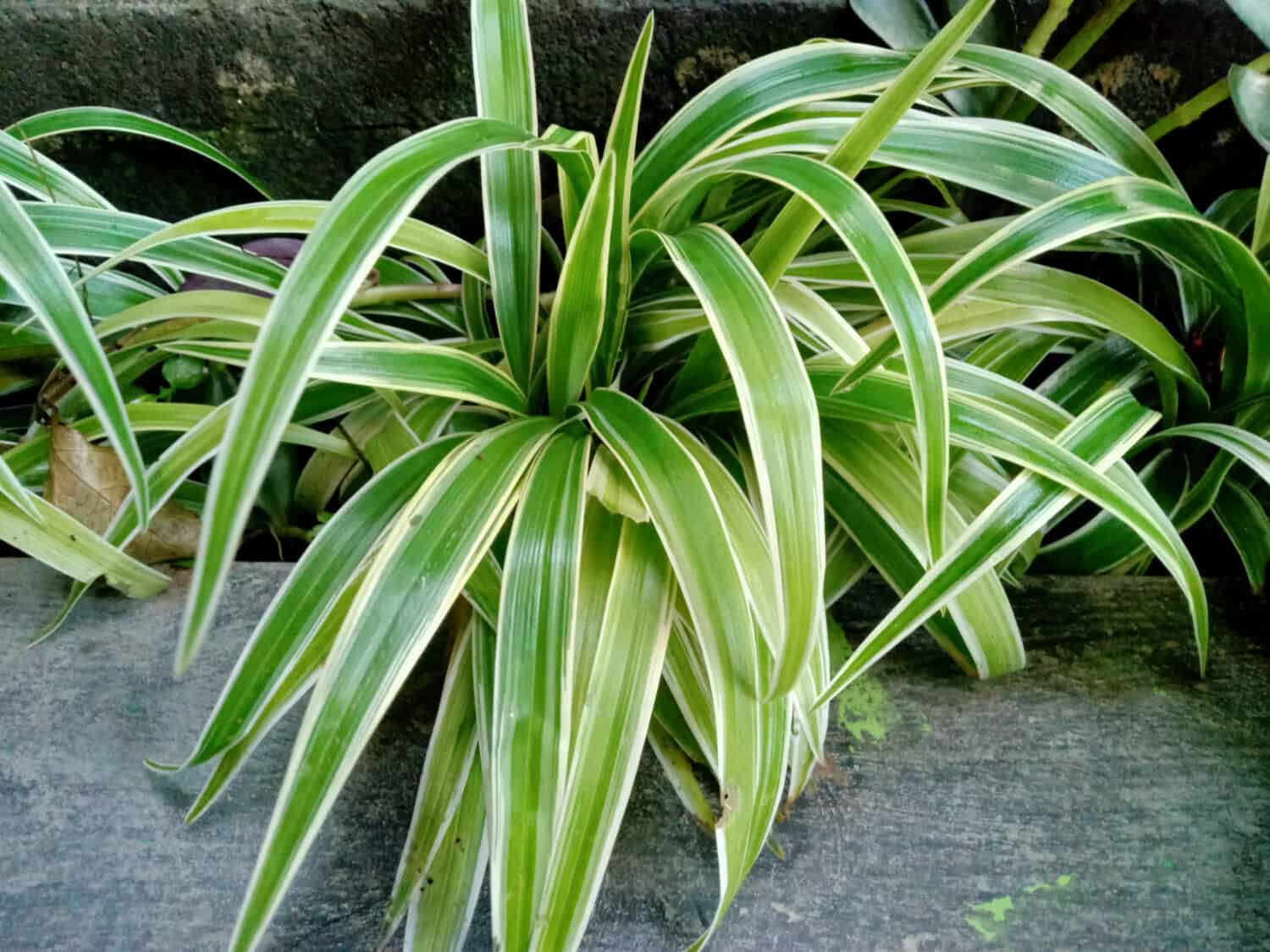
The Ocean Spider Plant grows up to eight inches tall and has lovely white blooms.
Image: Pamuji Eko Meiyanto, Shutterstock
©Pamuji Eko Meiyanto/Shutterstock.com
The vibrant colors of the Ocean spider plant’s foliage are quite reminiscent of the sea. The Ocean spider plant has tiny green leaves with even more delicate white borders at the sides, making it ideal for placement in the home’s smallest spaces. That’s not all, either. This little species of spider plant grows to a maximum height of eight inches and has lovely white blooms. This rare kind is easy to maintain, can be quite portable, and tends to be good at flowering. It is a green plant, but with the appropriate lighting, its vivid leaves may also have a faint blue or indigo tint.
2. Golden Light Spider Plant
Chlorophytum comosum ‘Hawaiian’

The Golden Light spider plant (pictured) grows well outdoors in tropical, humid climates.
©Irra/Shutterstock.com
This unique type of spider plant, also known as the Hawaiian or Golden Glow spider plant, has its origins on the stunning island of Hawaii. But because of its fantastical and lovely appearance, it has subsequently become a favorite among houseplant enthusiasts around the world. Unlike other spider plants, this one has a yellow band running straight down the middle of its leaves and has a light green color. One of the more uncommon types, the Golden Light spider plant, may reach a height of 12 inches and is best positioned in dim areas of the home.
3. Solid Green Spider Plant
Chlorophytum comosum ‘Solid Green’
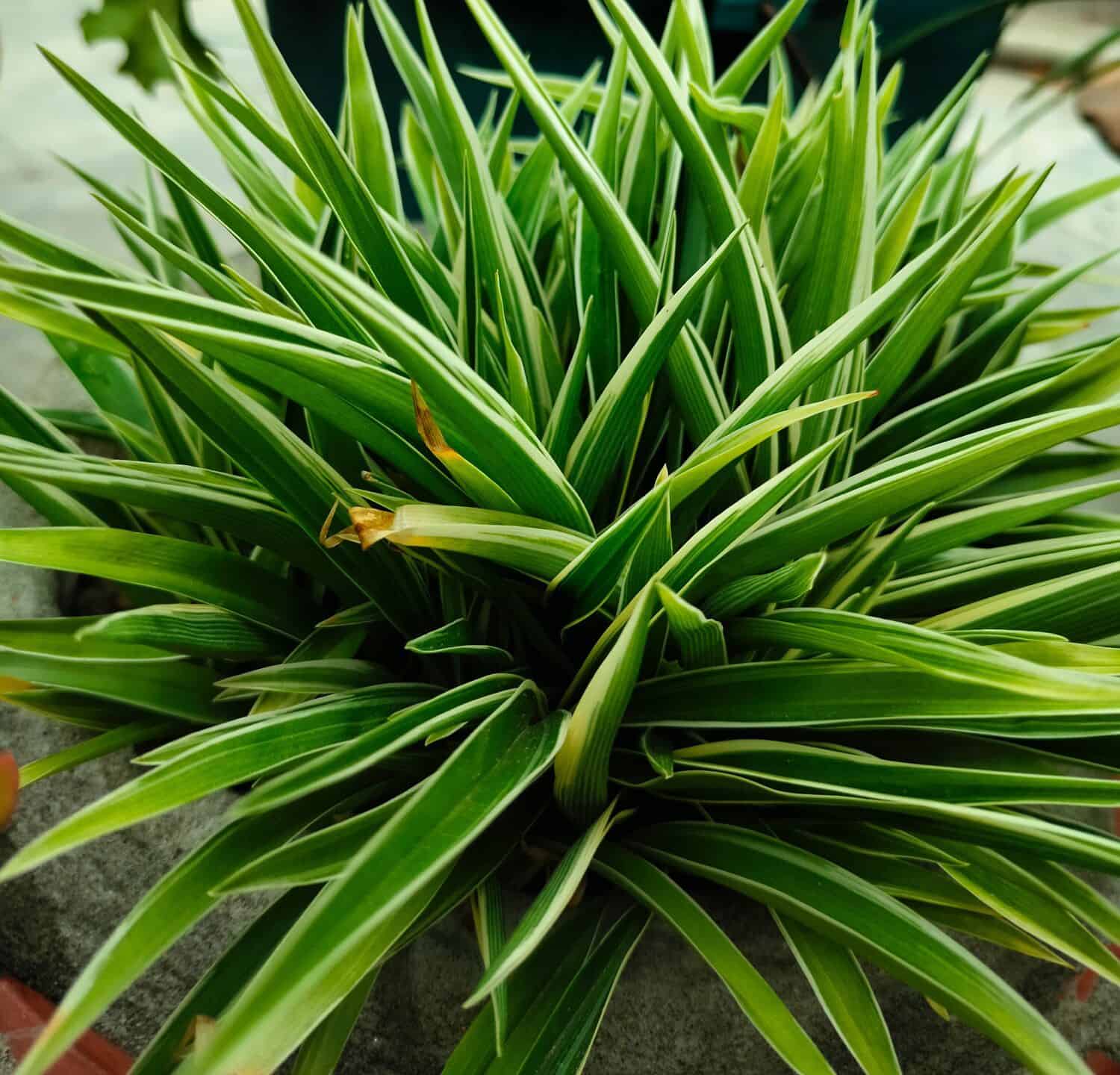
The solid green spider plant is sometimes called the Shamrock spider plant.
Image: Samia jannat Keya, Shutterstock
©Samia jannat Keya/Shutterstock.com
The term “non-variegated spider plant” refers to a spider plant that is entirely green. These spider plants can be distinguished from others by the lack of mottling or variegation on their leaves. If you are really hunting for a spider plant with solid green leaves, you will probably run into the Solid Green spider plant. This spider plant is sometimes referred to as the Shamrock spider plant by other gardeners. Although the spider plant’s native hue is pure green, finding one is exceedingly rare and challenging. In your neighborhood garden center, you most likely won’t find many of them. If you want something genuinely unique, or at least different from every other spider plant you see on the market, the solid green spider plants are a fantastic choice.
4. Bracket Plant
Chlorophytum capense
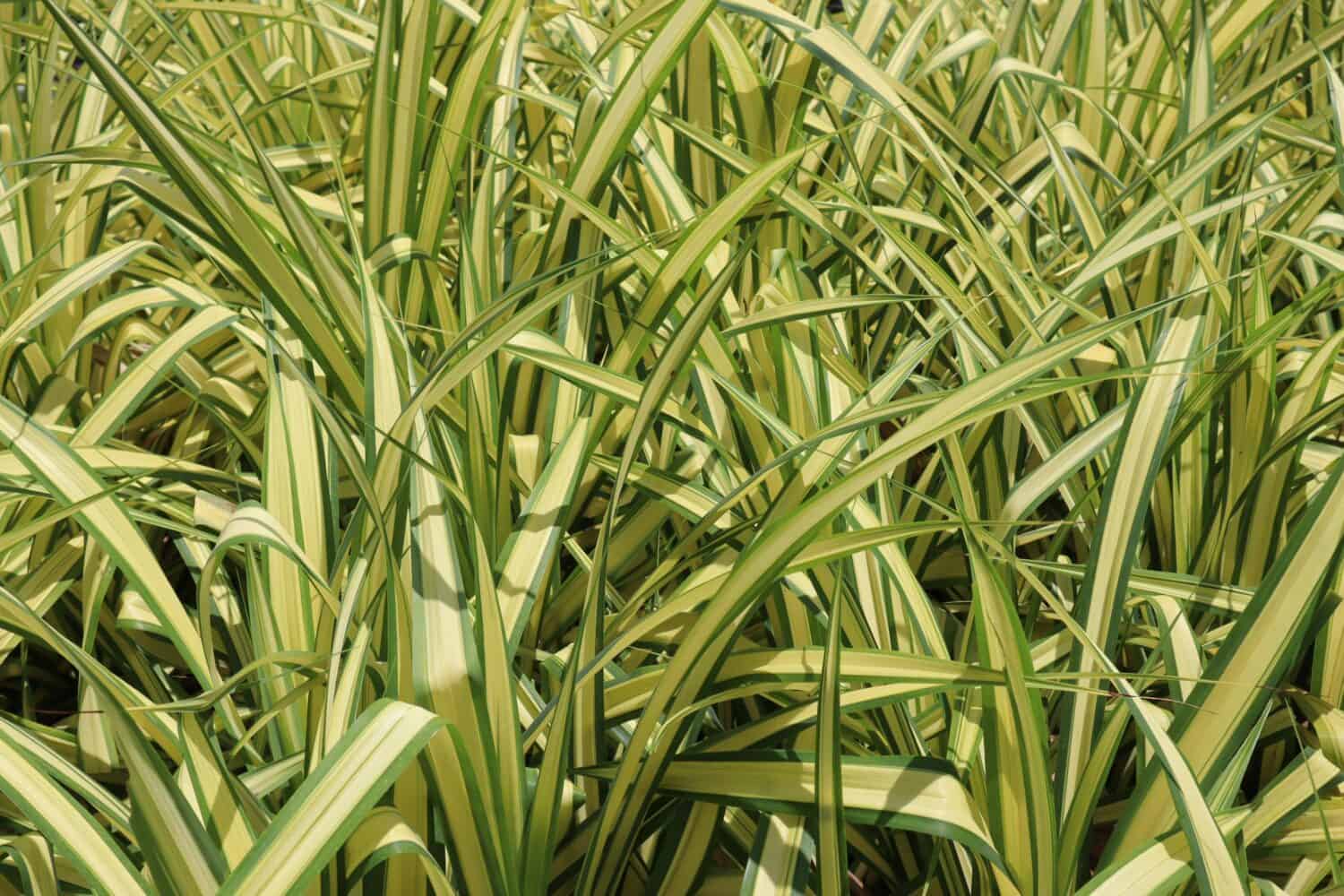
The Bracket Plant doesn’t generate hanging spiderettes like other spider plants.
Image: Kinnaree, Shutterstock
©Kinnaree/Shutterstock.com
Chlorophytum capense, another member of the spider plant family, is also referred to as the bracket plant. This species differs from the others in that it has uniform green leaves with a white margin and doesn’t generate hanging spiderettes. It’s possible that the blooms will look similar to those of the other species, though it requires quite a bit of care to bloom. Instead of hanging, the blossoms on Chlorophytum capense grow straight up from the stems.
5. Bichetii Plant
Chlorophytum bichetii
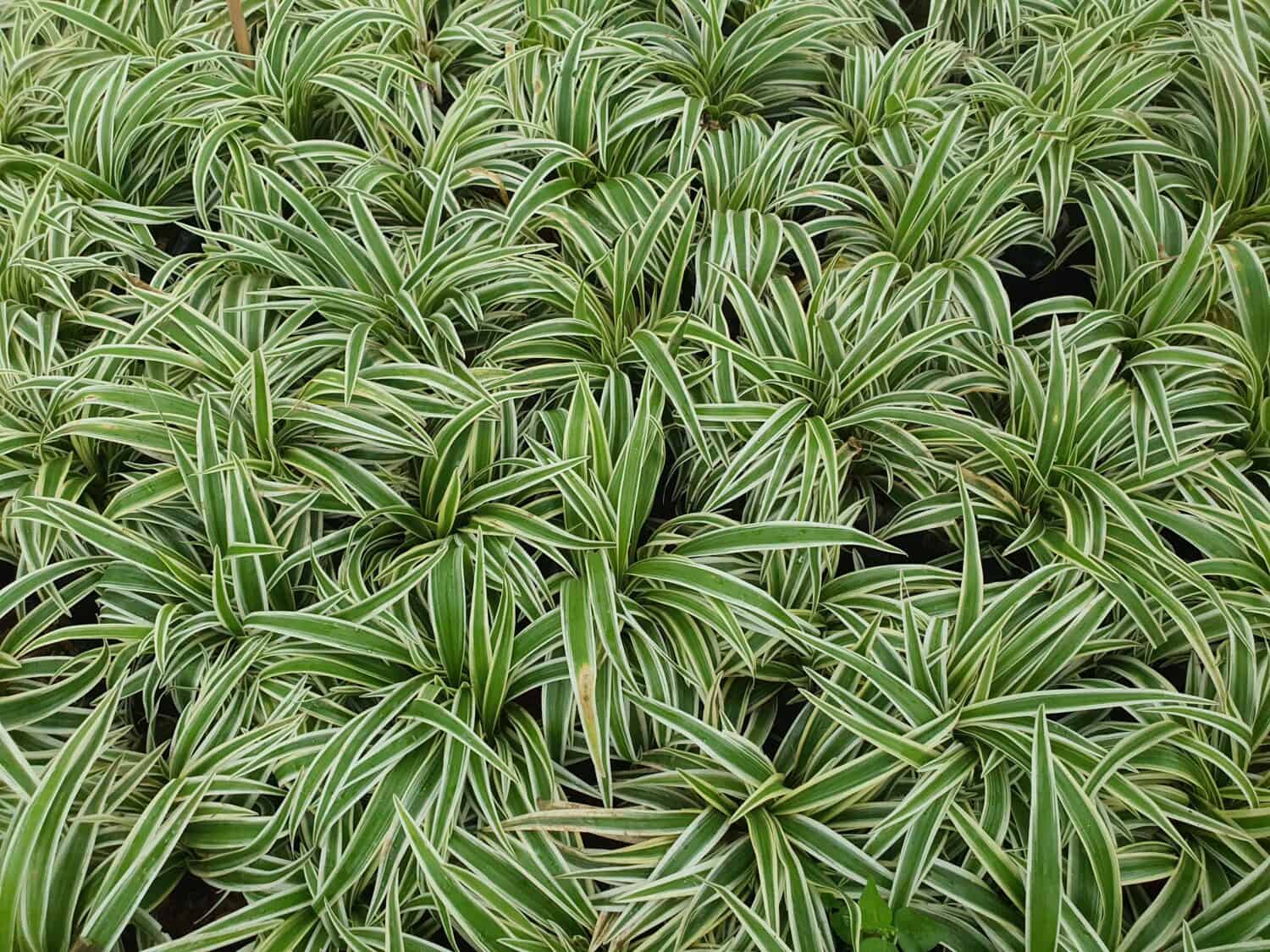
The Bichetii Plant can be used as a ground cover.
Image: Pingky_p, Shutterstock
©Pingky_p/Shutterstock.com
Chlorophytum bichetii is a non-flowering Chlorophytum species. There are no spiderette offspring with these plants, so they have a less spider-like appearance. Because of this, it may be utilized as a ground cover rather than merely a hanging plant. The same maintenance is required for this kind as for all others.
6. Curly Spider Plant
Chlorophytum comosum ‘Bonnie.’
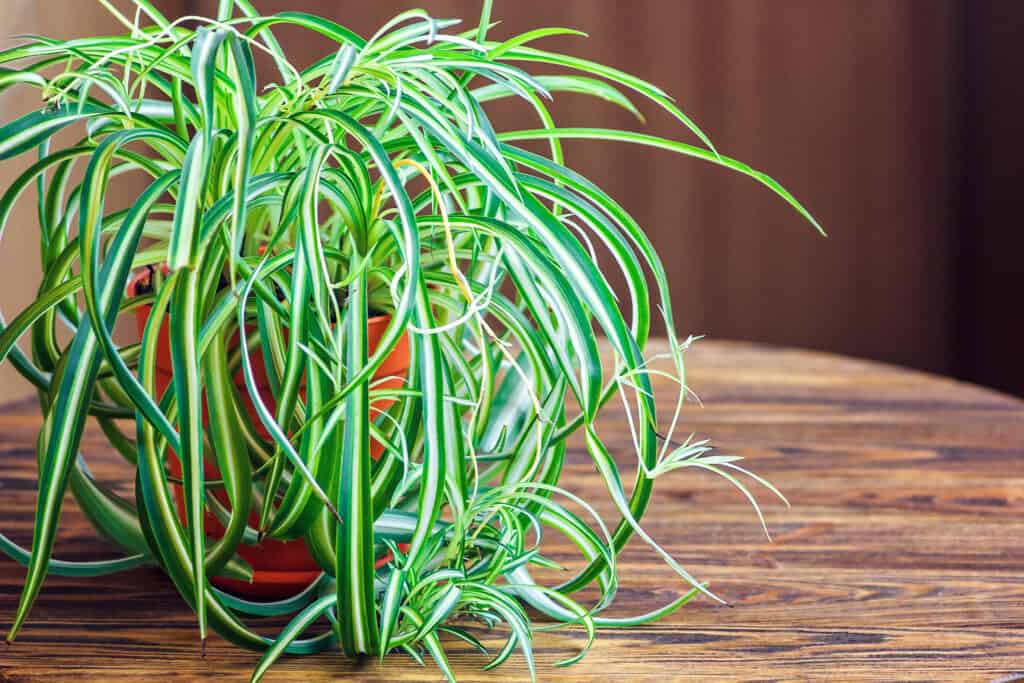
Curly spider plants (pictured) are popular indoor hanging plants.
©Bozhena Melnyk/Shutterstock.com
One of the most beautiful spider plant species is this variant, also known as the Bonnie spider plant. Because of their distinctive tendril-like leaves, curly spider plants add visual interest to any setting in which they are cultivated.
The curled spider plant is both bright and dark green in color. Their leaves are separated into several shades of green, with the lighter shade in the center and the darker shade on either side. Because it can be placed in any room of the house to lighten the atmosphere with its cool hue and lovely swirly leaves, this magnificent houseplant is frequently spread.
Place them in a prominent spot throughout the house for aesthetic effect. They may be hung from ceilings, placed in hanging baskets, and set on shelves. Ensure they are positioned in areas where their appearance will draw attention while also receiving indirect sunlight.
The curly spider plant may reach a height of eight inches. Temperatures between 60 and 70 degrees F are ideal for them. To sustain and improve the lovely and colorful swirly leaves of this type, make sure it receives adequate watering.
7. Fire-Flash Spider Plant
Chlorophytum amaniense ‘Fire-Flash’
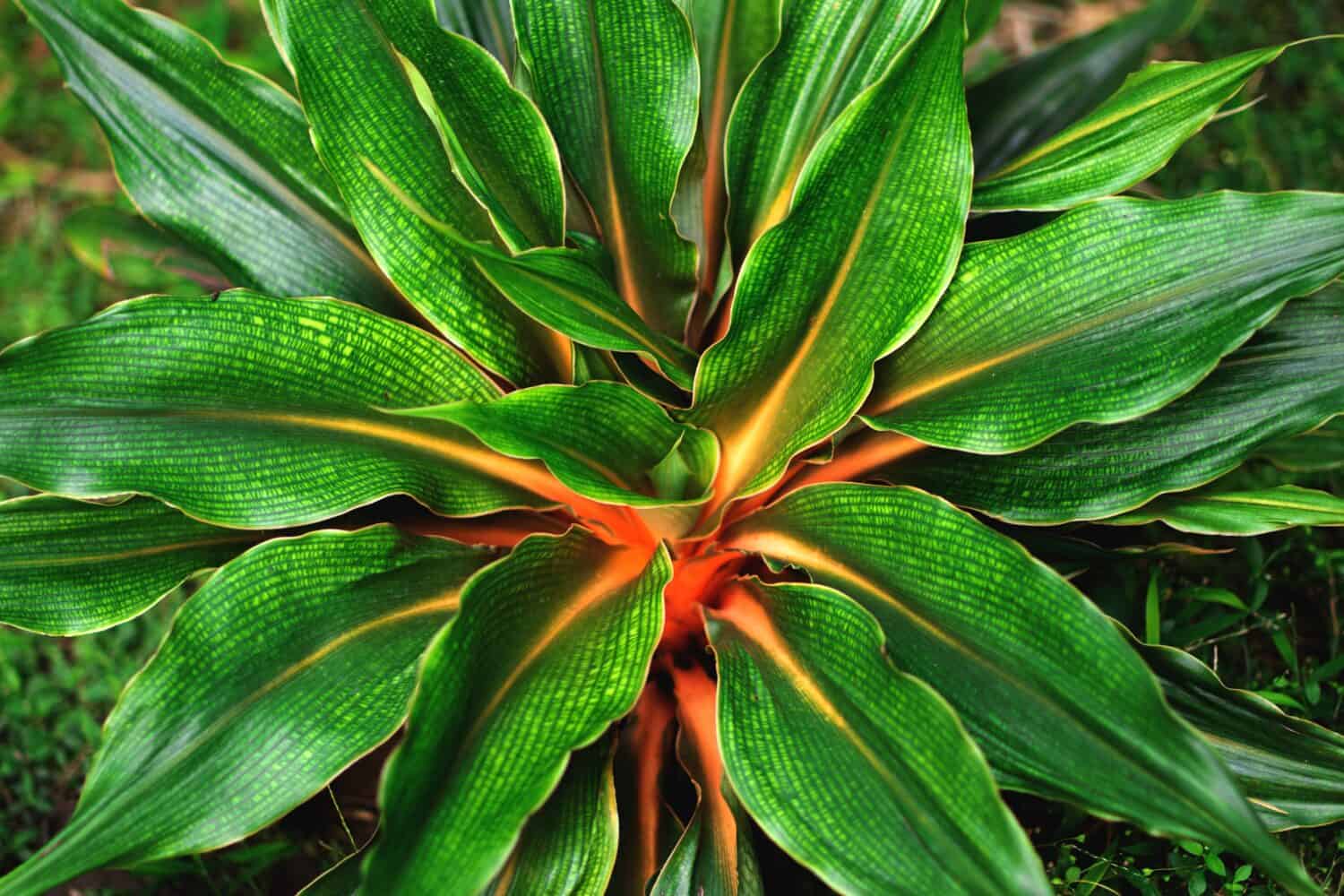
The distinctive orange base of the Fire-Flash makes it one of the most beautiful spider plants.
Image: Zulashai, Shutterstock
©Zulashai/Shutterstock.com
This distinctive species has the seductive quality of an orange plant base that resembles fire. Compared to other types, its leaves are shorter but broader. One of the most beautiful spider plant kinds to cultivate is this magnificent variant, especially if you’re looking for a unique pop of color. Additionally, unlike other species, they do not easily become rootbound. Temperatures between 55 and 50 degrees F are ideal for them. They are capable of being grown as both indoor and outdoor houseplants.
Put this variety in a large container to accommodate their root balls and soil requirements. To increase the health of their broad leaves, be sure to mist them often. They cannot be placed in an area with insufficient lighting. Placing them next to windows ought to provide them with enough light, but if not, use artificial lights. Even though they can withstand drought, they shouldn’t be neglected for an extended length of time. This type may be multiplied along with other sorts to create a vibrant impact inside and outside of your house.
The spider plant, regardless of variety, is a spectacular plant that would go well with the design of your house, especially when planted in thoughtful settings and lovely pots. If your schedule permits it, you can grow many varieties at once with generally the same care requirements. Any of the rare spider plant types we’ve mentioned in this guide are simple to grow and maintain. And if you can’t find a rare variety that you’re interested in, there are plenty of more common varieties that are just as good-looking.
Do you want to learn even more about the incredible and resilient spider plant? Take a look at our complete guide to spider plants here!
The photo featured at the top of this post is © iStock.com/Prasenjit Kar
Sources
- NCSU Staff, Available here: https://plants.ces.ncsu.edu/plants/chlorophytum-comosum/
- Susan Mahr, Available here: https://hort.extension.wisc.edu/articles/spider-plant-chlorophytum-comosum/
- Brandy Wells, Available here: https://www.petalrepublic.com/types-of-spider-plant/
FAQs (Frequently Asked Questions)
How many varieties of spider plants are there?
Chlorophytum comosum, also known as the spider plant, has over 200 varieties out there with more being developed regularly.
How many species of spider plant are there?
The genus Chlorophytum has over 200 species of plants, most of which are collectively referred to as spider plants.
What is the most common variety of spider plant?
The basic species Chlorophytum comosum is the most common type of spider plant that is grown indoors.
Thank you for reading! Have some feedback for us? Contact the AZ Animals editorial team.






